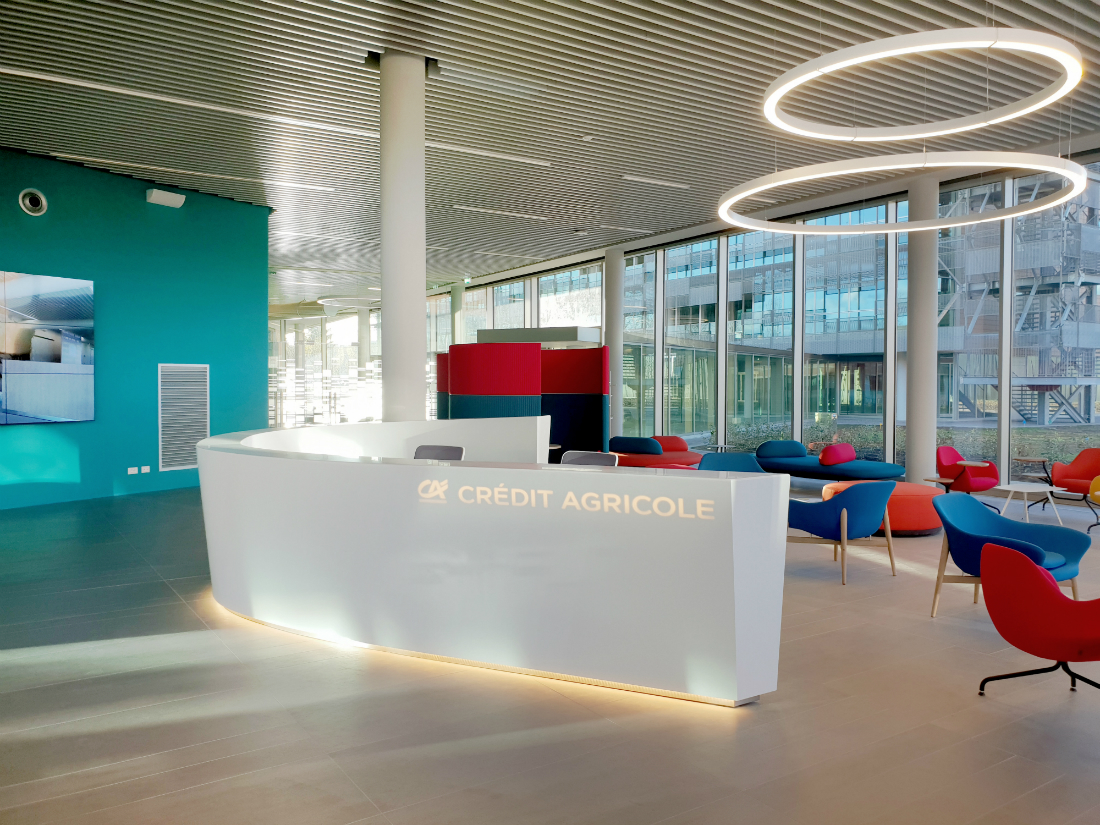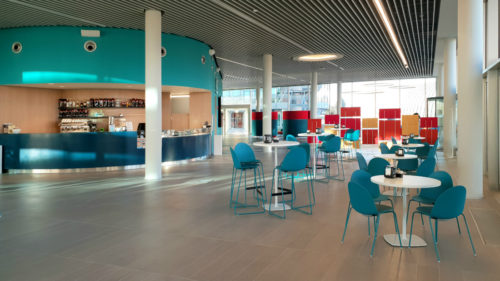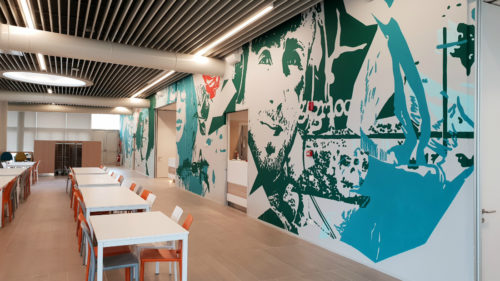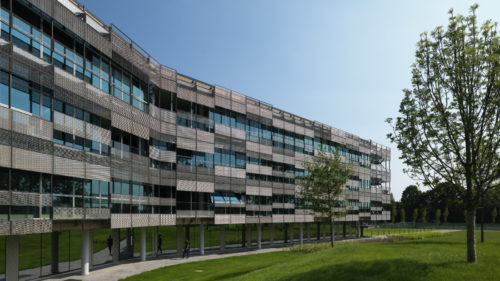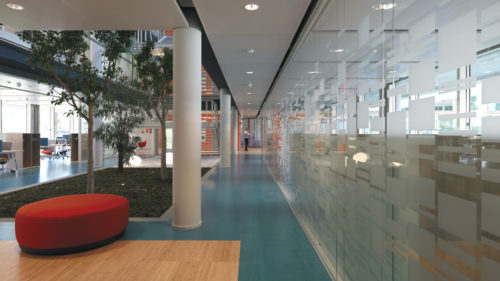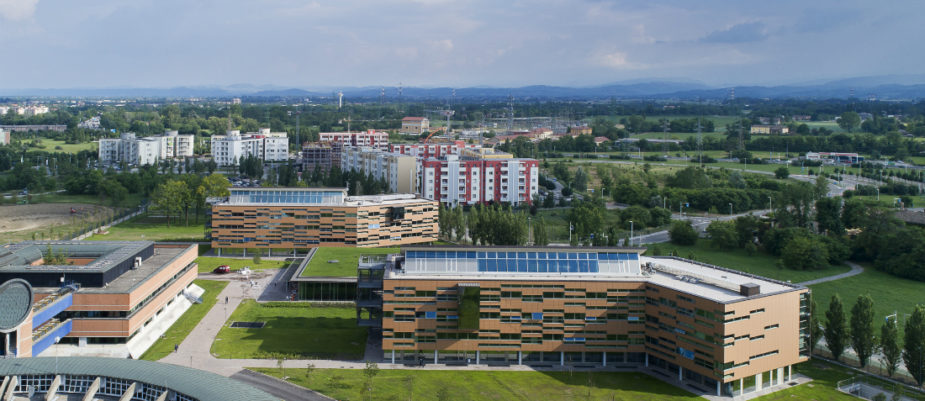
A sustainable smart working with a green heart. The Bank Crédit-Agricole’s Italian HQ in Parma, designed by Frigerio Design Group is based on three blocks: two Eco-offices, built with a “minimal, simple and green” energetical approach, linked by a Forum. Inside, an innovative food system distribution connects the restaurant with the different break areas: the agility of food becomes the image of the agility of the new ways of working.
“The maximum of green surface, the minimum of ecological footprint”: this is the Frigerio Design Group idea for the Crédit-Agricole HQ in Parma (Italy).
The core of the project is the Park Arboretum Crédit-Agricole, where the biophilia created by the landscape joins the sustainability: a green lung of 7 hectares with 500 new trees planted, thousands of shrubs and flowers.
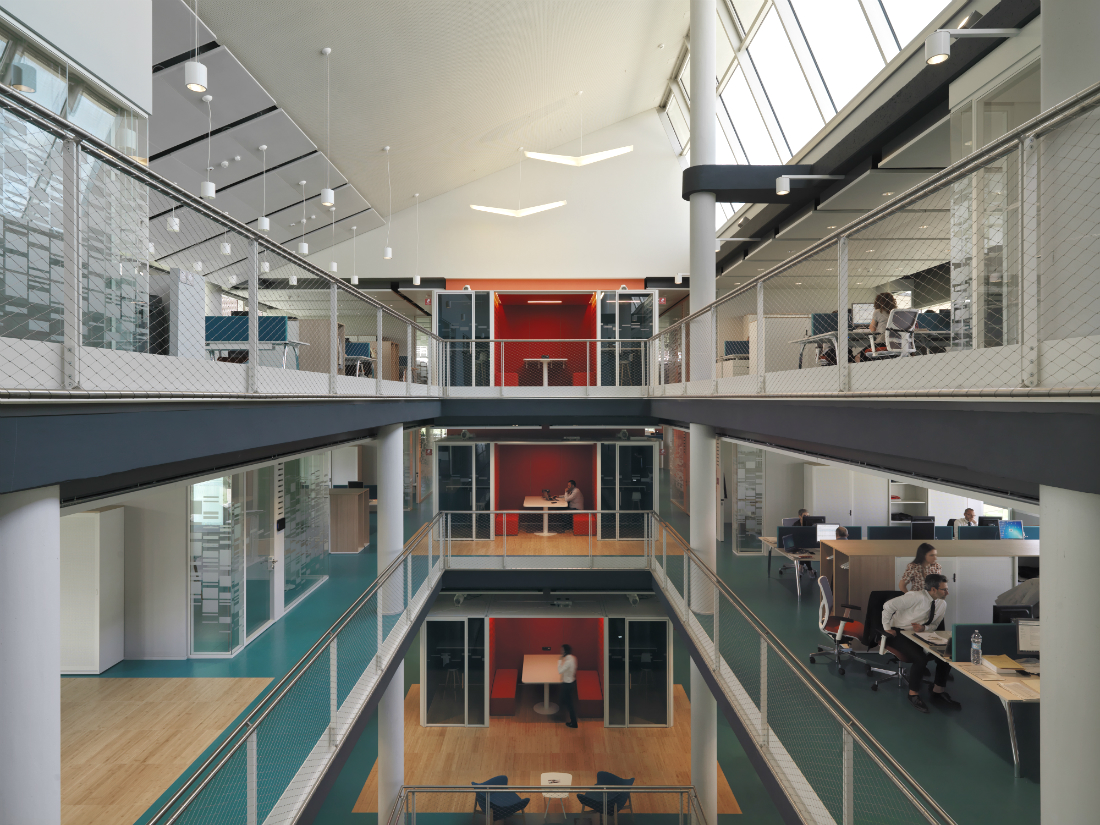
Inside, the two bioclimatic Eco-offices (a 10 thousands sqm space approximately) are connected by a 2100 sqm multifunctional Forum-restaurant, where a flexible design creates an ideal agorà, fostering communication and collaboration, and an ideal place for meetings and other activities.
The workspace follows a smart working and human-centred approach, created also by an innovative “food distribution system“, based on a central restaurant and the several break areas throughout the space, to offer different settings for the different ways food is actually eaten during a workday.
Also the restaurant presents a flexible setting allowing to hide some parts behind mobile partitions to create a wide forum for meetings of conferences.
The concept of “sensorial comfort” based on the optimization of acoustics and lighting system, maximizing the use of natural light and, is the constant through the different environment of the workplace: welcome point, open space, meeting and focus room, telephone boots all inspired by the idea of “smart living”.
The focus about environmental sustainability, that worths the LEED Gold certification, has brought Frigerio Design Group to maximize the passive energetical supports and the use of renewable energy sources: the building is powered by a geothermal and photovoltaic system, while a plant-based sewage-treatment facility allows the recycle of the wasted waters for irrigation or bathrooms.
Text by Gabriele Masi
